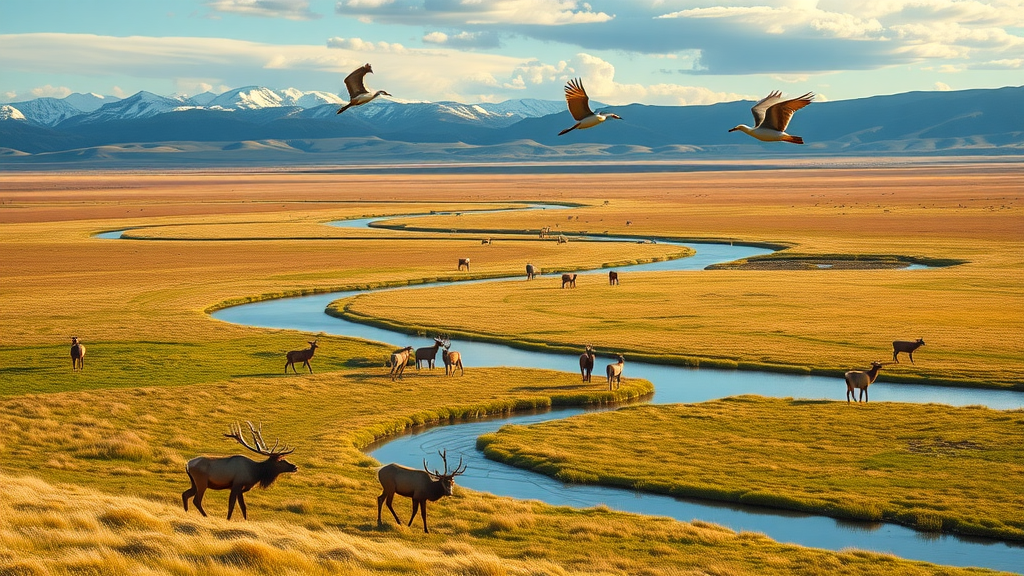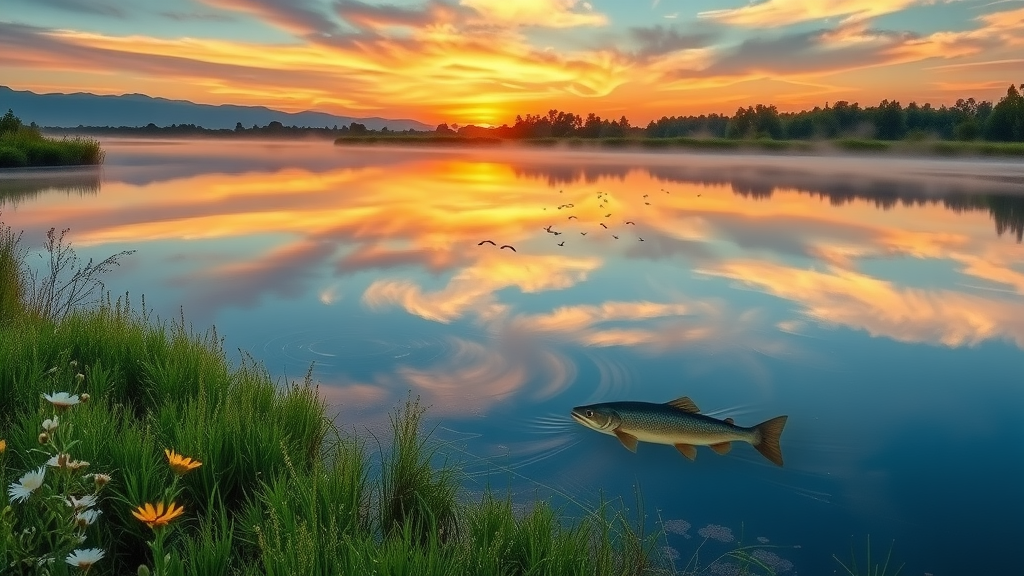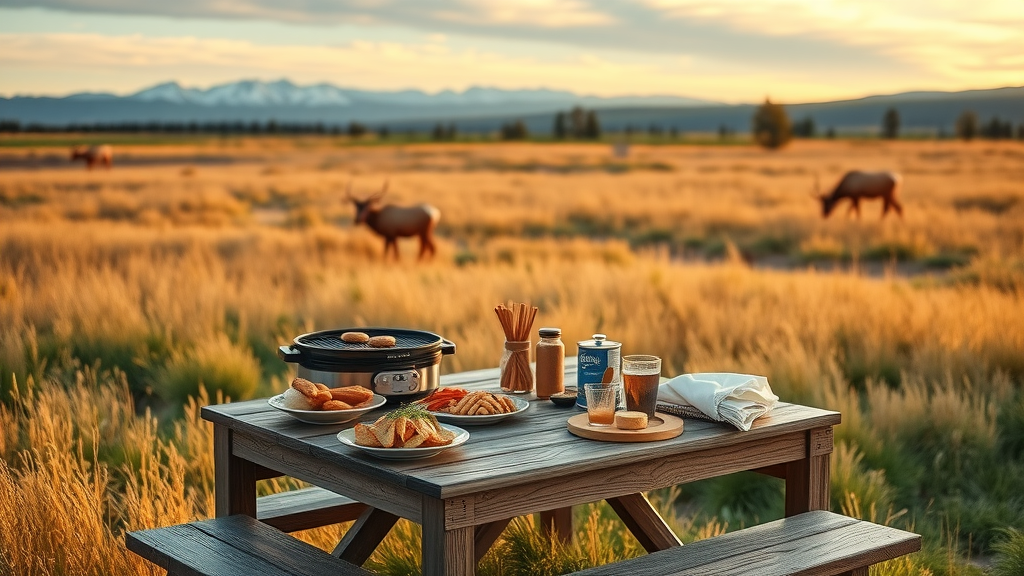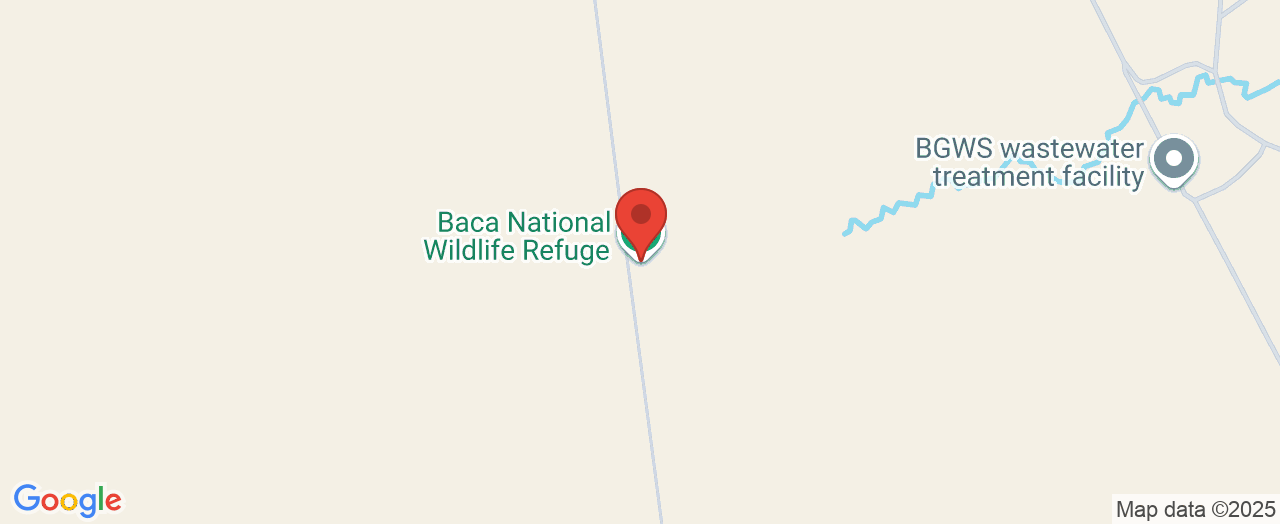A Place Where Colorado’s Natural History and Wildlife Converge in 93,000 Acres of Discovery
When most people imagine Colorado’s wild past, they picture endless meadows, towering snowcapped mountains, and the untamed sounds of wildlife echoing across vast valleys. What if you could truly step into that story—where elk bugle across fields, sandhill cranes fill the sky during their epic migrations, and snowmelt feeds life across a rugged, high-altitude landscape? Located in the northeastern reach of the San Luis Valley, the Baca National Wildlife Refuge offers just this: a living, breathing chapter of both ecological wonder and American heritage, nestled against the dramatic backdrop of the Sangre de Cristo mountains.
As the world increasingly turns its attention to conservation, wild lands like Baca National Wildlife Refuge hold lessons not just for scientists and nature lovers, but for anyone who seeks a deeper connection with the land and its story. These 93,000 acres are more than just scenery—they are vital habitats supporting migratory birds, endangered species, and over 12,000 years of human presence. Knowing what makes this refuge unique—and why these protected lands matter—can fundamentally reshape how we think about conservation, recreation, and our collective responsibility to the future. The untouched beauty, layered history, and critical role in water and wildlife protection make Baca National Wildlife Refuge a compelling place to explore, whether your interests lie in birdwatching, hiking, or simply experiencing the rich tapestry of the American West.

Why Baca National Wildlife Refuge Is a Critical Keystone for Conservation and Connection
Baca National Wildlife Refuge is not just another protected area—it’s a dynamic eco-region where grasslands, shrublands, wetlands, and riparian corridors weave together to support both rare wildlife and rich history. Defined by its vast scope, the refuge encompasses miles of winding creeks and expansive playas, creating an intricate network of habitats essential for migratory birds and resident species. But there’s more at stake than scenic views: these interconnected environments act as lifelines for native fish like the Rio Grande Chub and the endangered Rio Grande Sucker, whose populations are closely monitored to ensure their survival. Here, conservation is both a science and a legacy, where every acre plays a part in the health of the northern San Luis Valley and beyond.
Despite the beauty and scale of the refuge, many visitors are often surprised to learn about its pivotal role in hydrology and cultural preservation. The San Luis Valley itself, ringed by the Sangre de Cristo, San Juan, and Saguache ranges, sits at an elevation of 7,800 feet—a unique environment where seasonal snowmelt and artesian wells nourish not just agriculture, but rivers, creeks, and lush wet meadows. Without these protected lands, vital habitats for fish, birds, and elk could disappear, along with archeological treasures revealing over 12,000 years of human history. Understanding what is at risk—and what stands to be gained from stewardship—invites us all to see Baca not just as a preserve, but as a living classroom and sanctuary.

The Tangible Rewards of Experiencing Baca: Wildlife, Heritage, and Lasting Memories
Serving as both sanctuary and study, Baca National Wildlife Refuge quietly champions the art of conservation. As part of the greater San Luis Valley National Wildlife Refuge Complex, its 93,000 acres represent a rare diversity: shrublands and grasslands stretch alongside playas and wet meadows, making this landscape a hotbed for both scientific research and quiet exploration. Whether observing the impressive herd of resident American Elk—whose numbers can exceed 1,500—or discovering endangered fish whose survival depends on monitored, protected waterways, the benefits of a visit become abundantly clear. Here, each bend in the trail provides not only breathtaking views but a front-row seat to nature’s resilience and renewal.
For those who are curious about hands-on experiences, Baca offers authentic opportunities to participate in wildlife observation, seasonal hunting (with limited access permits), and nature photography—all grounded in a philosophy of sustainability and respect. Visitors can literally walk through landscapes where ancient people once lived, uncovering echoes of the Baca Grant Ranch and archeological evidence spanning more than twelve millennia. By connecting with these layers of history and ecology, guests leave with more than just photographs—they gain a sense of stewardship and understanding that lasts long after they return home.

From Ancient Habitation to Modern Stewardship: Tracing 12,000 Years of Connection
Baca National Wildlife Refuge is more than a preserve for plants and animals—it’s a living record of humanity’s relationship with the San Luis Valley. Archeological evidence unearthed across its rolling acres reveals over 12,000 years of habitation, trading, hunting, and cultural exchange. The extensive story of the famed Baca Grant Ranch is woven into the landscape: an enduring testament to the diverse peoples who depended on the valley’s resources for survival and community. Today, visitors can reflect on these stories while standing on the same land, considering how ancient wisdom and modern science together inform the delicate balance of protection and access.
The Role of Water: Lifeblood of the Refuge and the Valley
The survival of rare fish and migratory birds at Baca is no accident—it’s the result of carefully managed hydrology, fed by mountain snowmelt, surface water, and centuries-old artesian wells. In an arid climate perched nearly 8,000 feet above sea level, every drop of water must be conserved and wisely used. The refuge’s riparian corridors and playa wetlands aren’t just beautiful; they are functional ecosystems, filtering water and providing critical sustenance at key times during the year. Without this careful stewardship, species like the Rio Grande Sucker and Rio Grande Chub could face extinction in Colorado. By visiting or participating in the refuge’s conservation activities, individuals become part of this vital cycle of restoration and renewal.

What Makes Baca Unique Among National Wildlife Refuges
While many wildlife refuges share a mission of protection and research, Baca stands apart for its remarkable size, biodiversity, and commitment to the future. Unlike artificial wetlands that require constant human intervention, much of Baca’s landscape remains defined by natural processes, creating a rare opportunity to witness wildlife behaviors almost unchanged over generations. The critical status of game species, as reflected in the refuge’s limited elk hunting seasons, highlights the need for ongoing adaptive management—a process where both data and tradition come together for the benefit of present and future generations.
Stewardship and Science: The Refuge’s Ongoing Legacy in the San Luis Valley
At the heart of the Baca National Wildlife Refuge is a philosophy shaped by a balance between protecting wildlife and sustaining public enjoyment. As outlined by the U.S. Fish and Wildlife Service, every activity within the refuge—from restoring fish populations to monitoring elk herds—is guided by conservation best practices. The land’s management is part of a living heritage, ensuring that rare and native species not only survive but thrive in their natural habitats. This deliberate approach echoes across the Refuge System, putting science-backed resource management and restoration at the core of every decision.
This commitment is especially visible in the ongoing research into the habits and needs of the Rio Grande Chub and Rio Grande Sucker, two fish species that symbolize the refuge’s broader ecological mission. Intensive tagging and tracking programs help managers ensure that stream flows and aquatic habitats are kept healthy during the most critical times of year. And, just as importantly, the presence of over 1,500 resident elk offers evidence that large mammals can persist in a landscape thoughtfully governed for both ecological resilience and human connection.
A Visitor’s Perspective: Connection and Awe Among the Wetlands and Meadows
Some of the greatest validation for a place like Baca National Wildlife Refuge comes not from the scientists or land managers, but from people who find a sense of peace and inspiration among its fields and waterways. One recent visitor, Susan Winters, captured the spirit of the refuge in her own experience:
The Baca National Wildlife Refuge offers a serene escape into nature with its vast landscapes and diverse wildlife. While the refuge doesn't serve food - we ordered food at the Hot Springs. This image evokes the essence of a perfect picnic spot. Imagine savoring delicious, freshly grilled shrimp on a bed of greens with lemon wedges, surrounded by stunning views and the peaceful ambiance of the refuge. A visit here is a delightful way to connect with nature and enjoy a tranquil outdoor meal!
Such reflections highlight how the refuge provides more than just habitat—it’s a sanctuary for both wildlife and the human spirit. Those who journey here often talk about how a simple walk or picnic can become a moment of awe and gratitude, setting the stage for lifelong memories and a deeper appreciation of our natural world.
What Baca National Wildlife Refuge Teaches Us About Preservation and Place
At Baca National Wildlife Refuge, the rewards of conservation and public engagement are not abstract ideals, but daily realities witnessed in thriving wildlife, restored habitats, and meaningful visitor experiences. The refuge continues to set a standard within the U.S. Fish and Wildlife Service, demonstrating how science, history, and careful management can come together to benefit both the wild and the human community. By prioritizing the long-term health of diverse landscapes—while honoring centuries-old ties to people and culture—Baca National Wildlife Refuge offers vital lessons in stewardship for today and tomorrow.
For anyone eager to better understand wild America and support its future, exploring Baca National Wildlife Refuge is more than an outing—it’s an invitation to belong to something lasting. The preservation of nearly 100,000 acres for wildlife, water, and public enjoyment demonstrates the crucial role that such protected places play in sustaining the beauty and diversity of Colorado—and our own sense of connection to the land.
Contact the Experts at Baca National Wildlife Refuge
If you’d like to learn more about how Baca National Wildlife Refuge could inspire your next adventure—or how its unique blend of ecosystems supports crucial conservation efforts—contact the team at Baca National Wildlife Refuge.
📍 Address: Crestone, CO 81131, USA
📞 Phone: +1 719-256-5527
🌐 Website: http://www.fws.gov/refuge/baca/
Baca National Wildlife Refuge Location and Hours
🕒 Hours of Operation:
📅 Monday: ❌ Closed
📅 Tuesday: ❌ Closed
📅 Wednesday: ❌ Closed
📅 Thursday: 8:30 AM – 4:00 PM
📅 Friday: 8:30 AM – 4:00 PM
📅 Saturday: ❌ Closed
📅 Sunday: ❌ Closed

 Add Row
Add Row  Add
Add 





Write A Comment